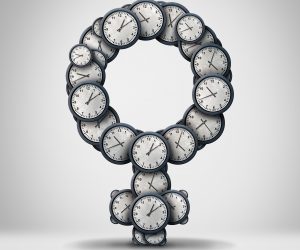 What is Low Back Pain?
What is Low Back Pain?
Low back pain (LBP) is a common disorder leading to lower back distress. Depending on its clinical manifestations, it can be acute (transient) or chronic (persistent).
Generally, acute LBP lasts less than three months. Conversely, chronic LBP lasts longer than three months and is often progressive.
LBP is widespread, and is the second most common neurological condition in the United States.
The pain may be localized to one area, such as the centre of the back or to one side, or run down along the leg. Symptoms may include pain in the back, buttocks or legs, soreness, stiffness, muscle spasms, and limited mobility that results in decreased functioning.
LBP is the most common and expensive musculoskeletal disorder in industrialized countries. Back pain has taken on the proportions of a veritable epidemic, counting now among the five most frequent reasons for visits to physicians? offices in North America.
LBP is a frequently occurring health problem with substantial economic impact due to work-related absenteeism and long-term disability. In contrast to the financial and health burdens of LBP, there are only a few reports of effective preventive interventions. Occupational physicians play an important role in return to work management of patients. However, the management of LBP by these specialists has hardly been examined.
Moreover, a review of employment outcomes of interventions for LBP concluded that clinical interventions are not effective in decreasing time to return to work. Approximately four out of five Canadian adults will experience at least one episode of back pain. LBP is most common in adults between 30 and 50 years of age.
Anatomy of the back
The back is a complex structure of muscle, bone, and other tissues that provides trunk and neck stability. The musculature of the back is extensive and incorporates a large area of the body from the pelvis to the top of the neck. The back is made up of 33 bones and five sections: the cervical spine, thoracic spine, lumbar spine, sacral region, and the coccyx.
Risk factors
Common risk factors associated with LBP include lack of exercise, heavy manual physical work, accidents (e.g., occupational injuries), vibration, smoking, and a family history of LBP.
For instance, it is thought that being overweight places greater pressure and strain on the back and may lead to LBP. Ageing contributes to decreased muscle elasticity and bone strength. Furthermore, the vertebral discs that sit between the vertebrae of the spinal column lose their flexibility and fluid, diminishing their ability to cushion the vertebrae. Women and men are equally affected by LBP.
Conditions linked to LBP
Sciatica is an ailment that affects the sciatic nerve, a large nerve that runs from the pelvis down the leg. Among other causes, sciatica may be the result of a herniated disc pushing on the sciatic nerve. This pushing causes shock-like or burning low back pain combined with pain through the leg and hip.
A ruptured or herniated disc occurs when the intervertebral discs are damaged by injury, disease, or normal wear and ageing. As these discs wear down, the cartilage can be pushed out into the region of the spinal cord or nerve and cause pain. Research indicates that ruptured discs occur most often in the lower portion of the lumbar region or in the neck.
Other conditions resulting in LBP include spondylitis, osteoporosis, spinal degeneration, fibromyalgia, skeletal irregularities, and spinal stenosis.
Treatment
Treatment is targeted at muscle strengthening, alleviating symptoms, and minimizing pain. Treatments for acute LBP are not meant to cure the problem but rather control the pain and help an individual return to their daily functioning.
In many instances, using non-prescription pain relievers like ibuprofen (e.g., Advil) or acetaminophen (e.g., Tylenol) for a few weeks is the safest and most effective way to help manage and control acute low back pain. Muscle relaxant medication may also be helpful but like all medications they have side effects (e.g., dizziness or sleepiness).
Other approaches to treating LBP include following exercises as prescribed by a health care professional, acupuncture, massage, chiropractic treatment, surgery, biofeedback, or cognitive behavioural therapy.
For more information on LBP, visit the National Institute of Neurological Disorders website.


